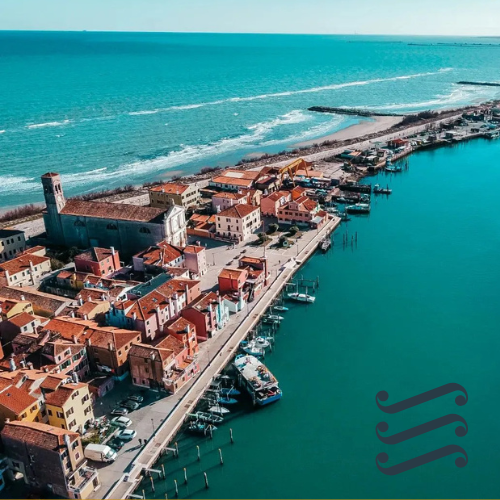
The Venice Lido, with its tree-lined avenues, Art Nouveau villas, and golden light caressing the sand, has always been a source of inspiration for artists and writers.
Among the most famous works set on this island is Death in Venice (Der Tod in Venedig) by Thomas Mann, published in 1912. This short novella tells the story of Gustav von Aschenbach, a German writer who travels to Venice to restore his health and ultimately meets his death, consumed by an obsessive love for a young Polish boy, Tadzio.
The Lido, with its decadent atmosphere and lagoon landscape, becomes the ideal stage for this tragedy of the soul. Its beaches, elegant hotels, and quiet streets provide the perfect backdrop for reflections on beauty, death, and art.
Luchino Visconti’s 1971 Film: A Cinematic Masterpiece
In 1971, Italian director Luchino Visconti brought Mann’s novella to the big screen with the film Death in Venice, starring Dirk Bogarde as Aschenbach and Björn Andrésen as Tadzio. The movie was filmed mainly at the Venice Lido, particularly at the Grand Hotel des Bains, which serves as the central location for the story. Visconti’s choice to set the film on the Lido was deliberate: for him, the island symbolized a space of transition between life and death, between beauty and decay.
The film premiered at the 1971 Cannes Film Festival, where Visconti received the Special Prize for the 25th anniversary of his career. It also won numerous international awards and recognitions, including the David di Donatello for Best Director and the BAFTA Award for Best Cinematography.
The Lido Today: A Place of Memory and Inspiration
Today, the Venice Lido still preserves the charm that made it famous in both the novel and the film. Walking along its tree-lined streets, visitors can admire Art Nouveau villas, golden beaches, and lush gardens that have inspired countless artists. The Grand Hotel des Bains, unfortunately closed since 2004, remains a symbol of that golden age of the Lido. Fortunately, a restoration and redevelopment project is underway, which we hope will soon return this architectural and cultural gem to its former glory, making it once again a vibrant heart of island life.
The Lido is also home to the Venice International Film Festival, one of the most important cinematic events in the world, attracting filmmakers, actors, and film enthusiasts from across the globe every year.
In this context, Death in Venice remains a touchstone—a bridge between literature, cinema, and reality.


